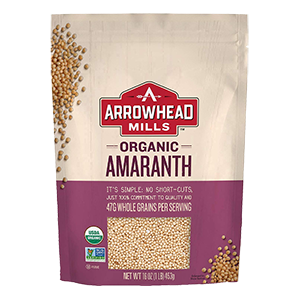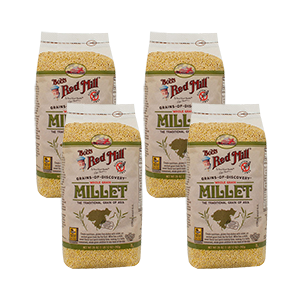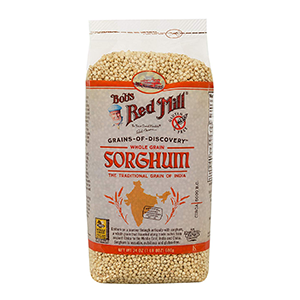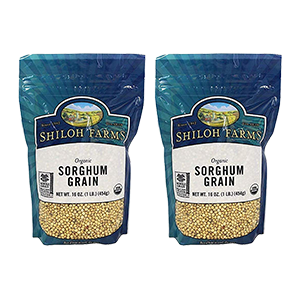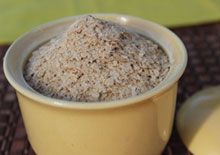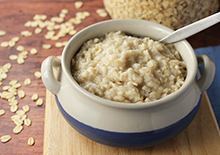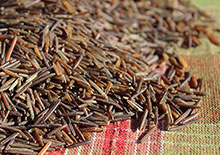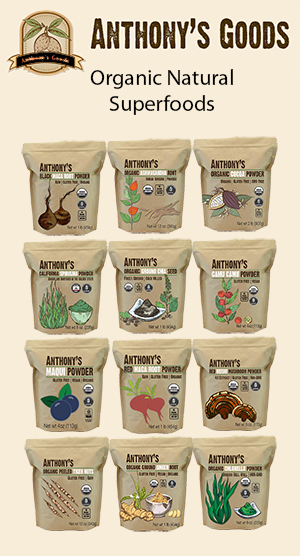- Home
- Plant-Based Cooking
- How to Cook Gluten-Free Grains
How to Cook Gluten-Free Grains
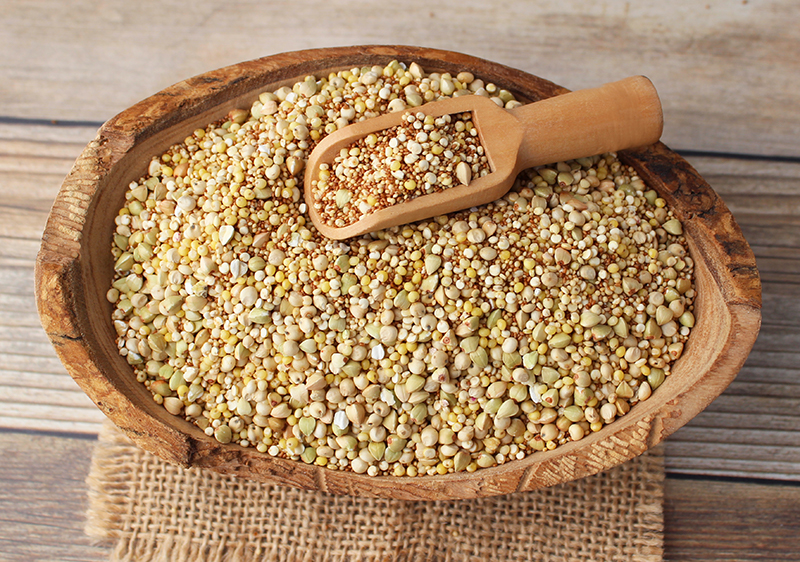
Wanting more specifics about how to cook gluten-free grains? Well, we have all the basics below for making six of the most popular varieties. These are water to grain ratios that we personally use when cooked grains are on the menu.
While soaking and rinsing grains is often a preferred method to reduce digestive inhibitors, it isn't always practical we realize. So, we give both water ratio options depending on how you want to cook them.
If you'd like more general nutrition information and comparative side by side analysis, head on over to our List of Nutritional Data. This will provide you with, for example, how much protein you might get from quinoa compared to millet OR calories in buckwheat compared to sorghum. Plus all vitamin and mineral averages too!
Top 6 Gluten-Free Grains
Gluten-free grains make great alternatives if you happen to be allergic to gluten or have celiac disease. (*) They can also be ground into fine flours as a replacement for wheat flour in baked goods and other recipes.
Use the links below to jump to your grain of choice.
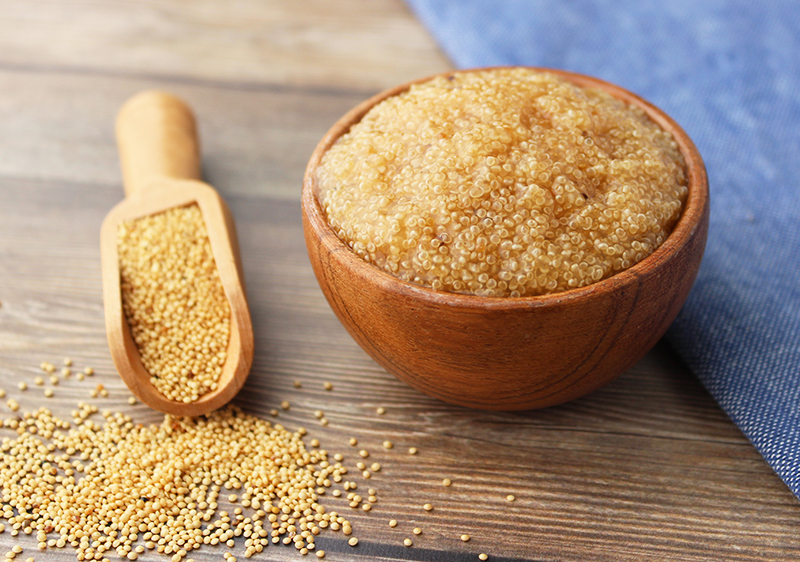
1) Amaranth
Raw amaranth contains high amounts of saponins and oxalates and is often best rinsed and/or soaked for a short time to increase digestibility when cooked.
How to Cook Amaranth:- 1C amaranth
- 2 1/2C pure filtered water
- 1/8t pink salt
- Rinse amaranth grain and strain water. (Or soak for 30 minutes but use 2C water.)
- Using a stovetop method, boil water and then stir in amaranth and salt.
- Place the lid on the pot and turn to lowest heat setting.
- Cook for about 20-25 minutes or until it's a porridge-like consistency.
Amaranth
(One Cup of Cooked - 246g)
Protein - 9g, 18%
Carbohydrate - 46g, 15%
Fiber - 5.2g, 21%
Fat - 3.9g, 6%
Calories - 251, 13%
(Percent Daily Values are based on a daily intake of 2,000 calories.)
Taste: Cooked amaranth has curled germs, similar to quinoa, and a porridge-like consistency with a slightly crunchy texture. It does tend to have a stronger flavor that you will either enjoy or not particularly care for.
Uses: Amaranth can be consumed straight, like oatmeal, as a breakfast type porridge or added to soup and stews. As a ground flour, it can be used for pancakes, baking purposes or used as a substitute when making a roux-based gravy.

2) Buckwheat
How to Cook Buckwheat:
- 1C buckwheat groats
- 2 - 2 1/2C water
- 1/8t pink salt
- Rinse buckwheat groats and strain water. (Or soak for 1 hour but use 1C less water when cooking.)
- We prefer a softer buckwheat consistency and use 2 1/2C when using 1C dry grain. Some may however prefer 2C for a firmer texture.
- Using a stovetop method, boil water and then add buckwheat and salt.
- Place the lid on the pot and turn to lowest heat setting.
- Cook for about 15-20 minutes or until water is absorbed.
- Remove from heat and allow to sit with the lid on for 5-10 minutes.
Buckwheat Groats
(One Cup of Cooked - 168g)
Protein - 5.7g, 11%
Carbohydrate - 33.4g, 11%
Fiber - 4.54g, 18%
Fat - 1.04g, 1%
Calories - 155, 8%
(Percent Daily Values are based on a daily intake of 2,000 calories.)
Taste: Cooked buckwheat is nutty and slightly bitter. Kasha buckwheat are groats that are toasted and cooked which have a nutty sweet flavor.
Uses: Buckwheat flour is a very popular ingredient used to make buckwheat pancakes and soba noodles. Kasha or cooked toasted buckwheat is a traditional porridge-type food served in Eastern Europe and also used in numerous recipes.
A type of dehydrated buckwheat granola and pizza crusts are also popular in the U.S. using the soaked and sprouted raw grain. Unhulled black buckwheat groats can also be grown as a microgreen variety commonly called buckwheat greens.

3) Millet
How to Cook Millet:
- 1C millet grain
- 3C pure filtered water (This is what we like, but some prefer 2 1/2 C water.)
- 1/8t pink salt
- Rinse grain and strain water. (Or soak for 30 minutes but use 2 1/2C water.)
- Using a stovetop method, boil water and then add 3C millet and salt.
- Place the lid on the pot and turn to lowest heat setting.
- Cook for about 25-30 minutes or until the water is absorbed.
- Let sit with the lid on for about 5-10 minutes after removing from heat.
Millet
(One Cup of Cooked - 174g)
Protein - 6.1g, 12%
Carbohydrate - 41.2g, 14%
Fiber - 2.3g, 9%
Fat - 1.7g, 3%
Calories - 207, 10%
(Percent Daily Values are based on a daily intake of 2,000 calories.)
Taste: Millet has a distinct but pleasant slightly sweet flavor that goes well with savory or sweet dishes.
Uses: It can be used as a replacement to rice or prepared as a porridge. The wholemeal flour is used to make millet polenta, baked goods and is a common one utilized to make Indian flatbread or roti.
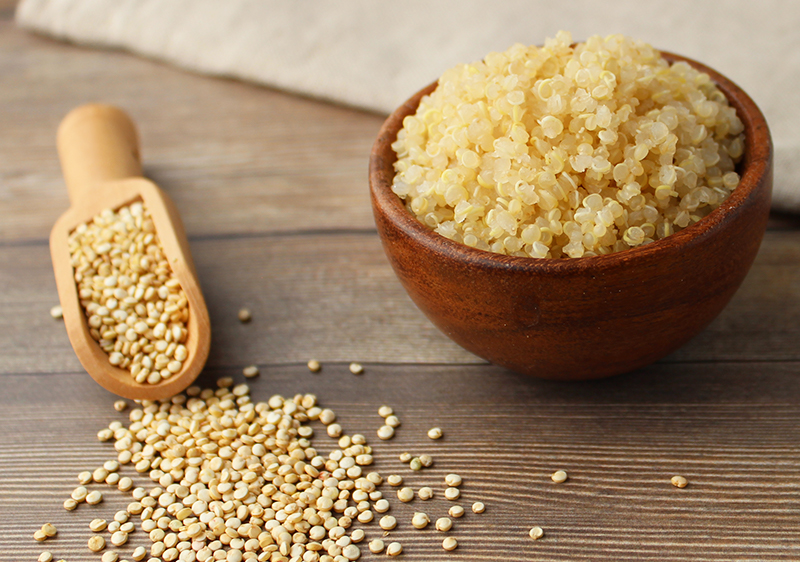
4) Quinoa
How to Cook Quinoa:
- 1C quinoa grain
- 2 1/2C pure filtered water
- 1/8t pink salt
- Rinse quinoa grain and strain water. (Or soak for 30 minutes but use 2C water)
- Using a stovetop method, boil water and then add quinoa and salt.
- Place the lid on the pot and turn to lowest heat setting.
- Cook for about 20-25 minutes or until water is absorbed.
- Remove from heat and allow to sit with lid on for 5-10 minutes.
(For more detail on different ways to cook quinoa visit this page.)
Quinoa
(One Cup of Cooked - 185g)
Protein - 8.1g, 16%
Carbohydrate - 39.4g, 13%
Fiber - 5.2g, 21%
Fat - 3.6g, 5%
Calories - 222, 11%
(Percent Daily Values are based on a daily intake of 2,000 calories.)
Taste: Quinoa has a slightly bitter taste but a pleasant buttery rich pasta-like flavor.
Uses: You can use quinoa the same way you would use rice as a side dish to vegetables, tempeh, tofu or meat protein. It can likewise be incorporated into many recipes, like sushi or curried vegetable sautés. Cooked quinoa also makes a great cold tabbouleh-like salad.

5) Sorghum
How to Cook Sorghum:
- 1C sorghum grain
- 3 quarts pure filtered water
- 1/8t pink salt
- Rinse sorghum grain and strain water. (Or soak overnight and drain)
- Using a stovetop method, boil water and then add sorghum and salt.
- (Sorghum cooks like barley or pasta so no steaming is involved.)
- In a pot without the lid, turn to medium heat setting.
- Cook for about 1 hour or until soft and tender.
- Drain remaining liquid and serve.
Sorghum
(One Cup of Cooked - 192g)
Protein - 6.6g, 13%
Carbohydrate - 46g, 15%
Fiber - 5g, 20%
Fat - 2.2g, 3%
Calories - 219, 11%
(Percent Daily Values are based on a daily intake of 2,000 calories.)
Taste: After cooking, sorghum has a chewy hardy firm texture and nutty-sweet flavor.
Uses: This feature makes it perfect for risotto, pilaf, and cold salads. It can also be used as a flour alternative. The whole grain can also be popped like popcorn.

6) Teff
How to Cook Teff:
- 1C teff grain
- 4C pure filtered water
- 1/8t pink salt
- Rinse teff grain and strain water.
- Using a stovetop method, boil water and then add teff and salt.
- Place the lid on the pot, reduce heat to low and stir occasionally.
- Cooks fast in about 15-20 minutes.
Teff
(One Cup of Cooked - 252g )
Protein - 9.8g, 19%
Carbohydrate - 50g, 16%
Fiber - 7.1g, 28%
Fat - 1.6g, 2%
Calories - 255, 13%
(Percent Daily Values are based on a daily intake of 2,000 calories.)
Taste: Teff has a mild nutty earthy taste and porridge-like consistency. It makes a hardy porridge-type breakfast cereal or can likewise be used to thicken soups or stews.
Uses: The milled flour is used to
make the popular Ethiopian fermented sourdough flatbread, called injera.
Teff flour can also be utilized for baking purposes or added to veggie
burgers to increase their protein content.
Selecting Your Gluten-Free Grains
As always, we recommend purchasing from quality suppliers that are certified organic and non-GMO. In addition, some brands also used heirloom varieties that are slightly closer to originally cultivated ancient grain species.
Precautions:
We always recommend soaking and rinsing grains prior to cooking methods to improve overall digestibility. It is important for those with gluten sensitivities or those with celiac disease to purchase all gluten-free ancient grains from brands that are processed in a certified gluten-free facility. Products should indicate this with a Certified Gluten-Free seal on the label.
Shop Related Products (About Affiliates & Amazon Associate Paid Links)
Affiliate Disclaimer: This section contains affiliate product links. If you make a purchase through our recommended links, we receive a small commission at no additional cost to you. Thanks for the support.
